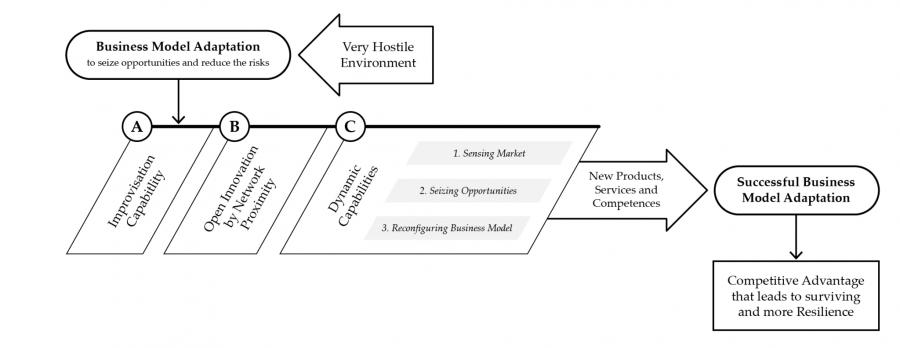The Journal of Open Innovation has published “Business Model Adaptation to the COVID-19 Crisis: Strategic Response of the Spanish Cultural and Creative Firms” by Montserrat Peñarroya and Francesc Miralles

In Montse’s blog, she summarised the observations made through the investigation:
1) Some companies did not adapt: Some companies did not adapt their business models for several reasons: either they did not think it was necessary and had enough financial muscle to wait for "the storm to pass", or their managers had the perception that adaptation was impossible and prepared to resist, or they were engaged in other jobs.
2) About the adapted components: The companies that adapted did so by changing some of the components of their business model (sequential adaptation) and very few did so radically. To learn about the adapted components, please refer to the article.
3) Phases of adaptation: Companies that adapted did so in 3 phases, the first being improvised adaptation, in which they had to respond to the emergency with the technical, human and knowledge assets they had at the time, while planning medium-term adaptation.
4) The role of institutions. The organizations that have supported cultural enterprises during the crisis have played a fundamental role both for the moral support of the people involved and for the transmission of the innovation needed to adapt. Without them, the diffusion of innovations would have been very difficult.
The article proposes a “new framework that postulates that business model adaptation is better understood under the emergency management theory and improvisational capability, instead of only under the dynamic capabilities lens. Organizational proximity in the diffusion of innovations under the open innovation paradigm is also critical to understanding the business model adaptation”. To better understand the adaptation of the business models of cultural enterprises, it is necessary to analyze their ability to improvise in an emergency, their link with institutions and organizations that bring together their peers, and with their ability to detect the changing needs of their customers and create a medium-term plan to meet them.
Please feel free to read the full article at https://www.mdpi.com/2199-8531/8/1/39